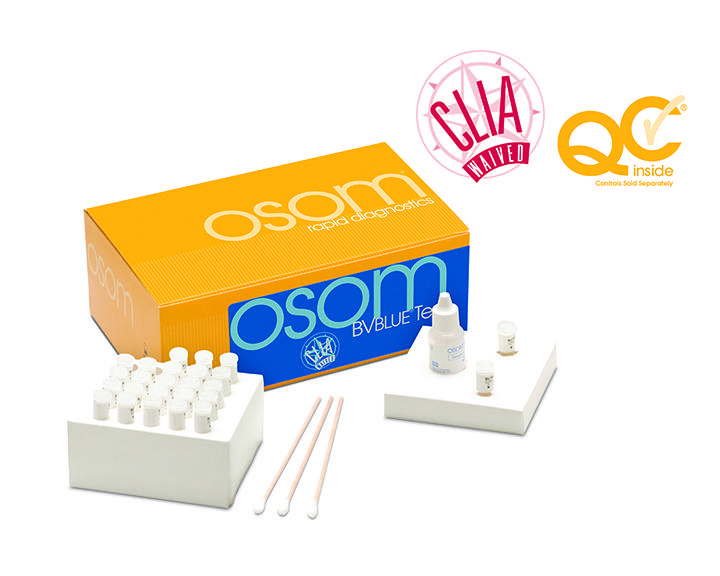OSOM® BVBLUE® Bacterial Vaginosis Test (25 Tests/Kit)
$250.00
Price per unit: $10.00

Product Description
The OSOM® BVBLUE® Bacterial Vaginosis Test is a rapid, CLIA Waived, easy to use test that detects elevated vaginal fluid sialidase activity, an enzyme produced by bacterial pathogens associated with bacterial vaginosis including Gardnerella, Bacteroides, Prevotella and Mobiluncus.
| 1-5 | 6-10 | 11+ |
| $250.00 | $230.00 | $217.50 |
The OSOM® BVBLUE® Bacterial Vaginosis Test is a rapid, CLIA Waived, easy to use test that detects elevated vaginal fluid sialidase activity, an enzyme produced by bacterial pathogens associated with bacterial vaginosis including Gardnerella, Bacteroides, Prevotella and Mobiluncus.
Features and Benefits
- 92.8% sensitive, 98% specific versus Gram Stain
- 1 minute hands-on-time; 10 minute read time
- Instant color change provides clear easy-to-read results.
- CPT Code: 87905QW
- Sample Type: Vaginal Swab
ref: GEN183
SKU: DTK-400183
OSOM® BVBLUE® Bacterial Vaginosis Test Package Insert
What is bacterial vaginosis?
Bacterial vaginosis (BV) is a condition that happens when there is too much of certain bacteria in the vagina. This changes the normal balance of bacteria in the vagina. Bacterial vaginosis is the most common vaginal condition in women ages 15-44. Many women with bacterial vaginosis have no signs or symptoms. When symptoms are present, they may include the following: A thin white or gray vaginal discharge; Pain, itching, or burning in the vagina; A strong fish-like odor, especially after sex; Burning when urinating; Itching around the outside of the vagina.
Bacterial vaginosis results from overgrowth of one of several bacteria naturally found in your vagina. Usually, “good” bacteria (lactobacilli) outnumber “bad” bacteria (anaerobes). But if there are too many anaerobic bacteria, they upset the natural balance of microorganisms in your vagina and cause bacterial vaginosis.
If BV is untreated, possible problems may include: Higher risk of getting STIs, including HIV. Having BV can raise your risk of getting HIV, genital herpes, chlamydia, pelvic inflammatory disease, and gonorrhea. Women with HIV who get BV are also more likely to pass HIV to a male sexual partner.
Risk factors for bacterial vaginosis include:
- Having multiple sex partners or a new sex partner
- Douching
- Natural lack of lactobacilli bacteria
To help prevent bacterial vaginosis:
- Minimizing vaginal irritation
- Avoiding douching
- Avoiding a sexually transmitted infection
Learn more about bacterial vaginosis at the Centers for Disease Control and Prevention.
Additional information
| Weight | 0.7 lbs |
|---|---|
| Dimensions | 10 × 10 × 5 in |
| Quantity | 1 to 5, 6 to 10, 11+ |


